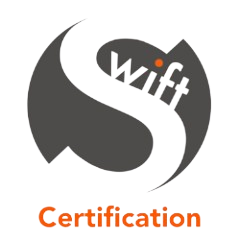Achieving ISO 45001 certification is a powerful way for small and medium-sized enterprises (SMEs) to demonstrate commitment to workplace safety and operational excellence. However, for many smaller businesses, perceived costs can be a barrier. Fortunately, careful planning and practical choices can make certification both affordable and highly beneficial. In this article, we explore budget-friendly strategies, practical differences between accredited and unaccredited bodies, and tips for maximising your investment.
Accredited vs. Unaccredited Certification Bodies: Flexibility and Support
UK businesses can choose between accredited (e.g., UKAS-recognised) and unaccredited certification bodies for ISO 45001. Accredited bodies offer globally recognised certification, valuable for regulated industries or tendering for major contracts. However, this usually comes with higher upfront costs. For most SMEs, the management system requirements remain identical whether they choose an accredited or unaccredited certification route; the main trade-off is brand recognition. If your business does not operate in regulated sectors or is not bound by requirements of a globally known certificate, unaccredited certification is both cost-effective and practical.
Breakdown of Costs: Direct and Indirect
ISO 45001 certification costs depend on organisation size, complexity, and the chosen certification route. Here’s a breakdown:
Direct Costs:
- Certification audit fees: Typically £2,000–£6,000 for small businesses and £5,000–£15,000 for medium-sized firms. Unaccredited bodies may charge significantly less, sometimes with payment plans.
- Consultancy: £800–£2,000 per day. Overall, £5,000–£20,000 depending on project scope and internal capacity. Both UKAS and non-UKAS certification bodies may advise you on consultancy partners, but they must remain impartial and cannot provide hands-on consultancy, making their support limited during implementation.
- Training: Internal auditor and employee awareness training, £0–£1,000 for basic courses, depending on availability of your internal resources.
- Ongoing maintenance (surveillance audits, recertification): £1,000–£5,000 a year or less if you choose an unaccredited certification body.
Indirect Costs:
- Internal resources: Staff time for documentation, process mapping, risk assessments, and audits.
- Document control and system maintenance: Investing in clear, compliant policies and evidence tracking can require initial effort, but saves time and money down the line.
Optional Extras:
- Software tools, additional external audits, or bespoke training, which may add further value but also cost.
Cost-Saving Strategies for Internal Preparation
A. Upskill Your Team
- Invest in affordable online and classroom training for internal auditors. Competent internal teams reduce reliance on expensive consultants and help maintain your system.
B. Utilise Quality Templates and Toolkits
- Leverage cost-effective templates for risk assessments, procedures, and system documentation from certification or consultancy providers. Adapting proven materials saves time and reduces errors.
C. Phase Your Implementation
- Spread out the certification journey by tackling the most urgent or impactful processes first. Prioritise high-risk areas, then gradually expand to full system coverage.
Choose Flexible Certification Bodies
- You can opt for unaccredited bodies offering bundled support, payment plans, and stepwise engagement. Discuss your budget and preferred approach up front.
E. Embrace Digital Tools
- Implement cloud-based documentation systems, task trackers, and audit checklists to streamline preparation and evidence collection without extensive manual effort.
F. Engage Management Early
- Top-level buy-in accelerates adoption, minimises resistance, and avoids duplicated effort.
FAQs for SMEs Worried about Time, Money, and ROI
Is unaccredited certification “real” ISO 45001?
Yes. The management system is held to the same ISO standard. Unaccredited bodies simply lack global third-party oversight. Your process and business improvements are fully valid and beneficial.
Will clients accept unaccredited certification?
Most will—unless operating in highly regulated industries. For many SMEs, a credible, well-run management system makes the difference, not the logo.
Can I do most work internally?
Absolutely. SMEs can cut significant costs by investing in internal training and using trusted templates.
What’s the ROI?
Typical savings include reduced workplace accidents, lower insurance premiums, improved business opportunities, and greater staff wellbeing – frequently offsetting the initial cost in the first year.
Is there ongoing cost?
Annual surveillance audits and three-year recertification, plus periodic training – but most costs are lower than initial implementation.
Final Thoughts
ISO 45001 certification need not be expensive or daunting, even for resource-constrained SMEs. By selecting the right certification body, focusing on practical training, leveraging templates, and phasing your implementation, you can enjoy all the advantages of world-class workplace safety without overspending. Resourceful, committed preparation unlocks tangible returns for your teams, your clients, and your bottom line.
For tailored support or more cost-effective solutions, consult certification partners such as Swift Certification, who understand the realities of small business and provide hands-on, flexible guidance at every stage. Safe, successful businesses are built on smart investment – ISO 45001 certification, done wisely, is one of the smartest moves you can make.




